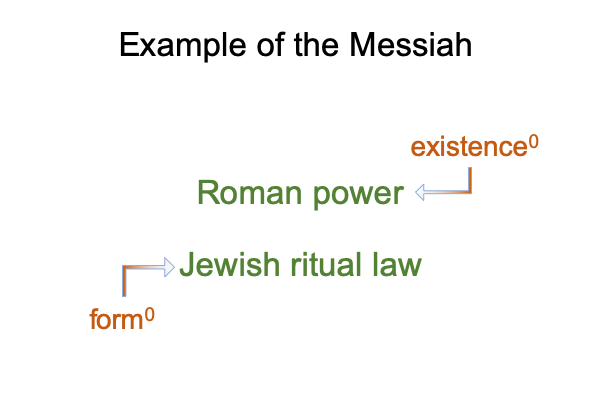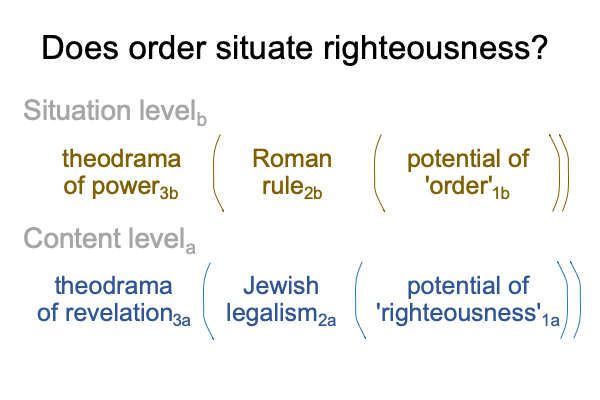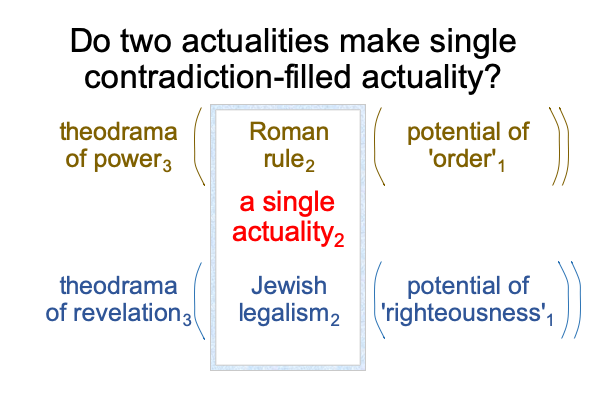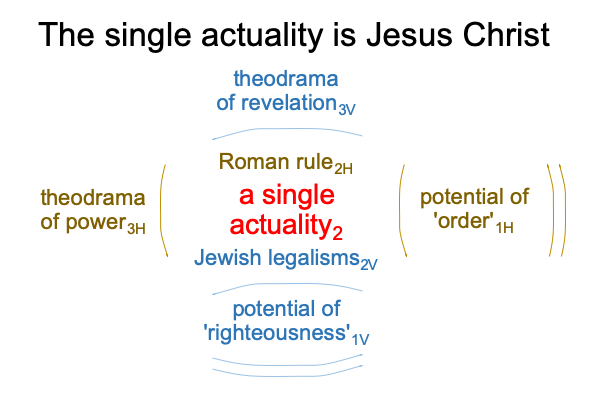Comments on Fr. Dwight Longenecker’s Podcast (2020) “Myths, Monsters and Mysteries” (Part 7)
0050 The myth is hylomorphic. So is the phantasm1b that the myth’s telling1a inspires.
The hylomorphism of the myth1a is some real event [hides within and gives rise to] a story.
The hylomporhism of the phantasm2b is a configuration of matter and form by way of the imagination1b. Matter or being (in Latin, ens) should substantiate the form.
0051 Here is how that looks.
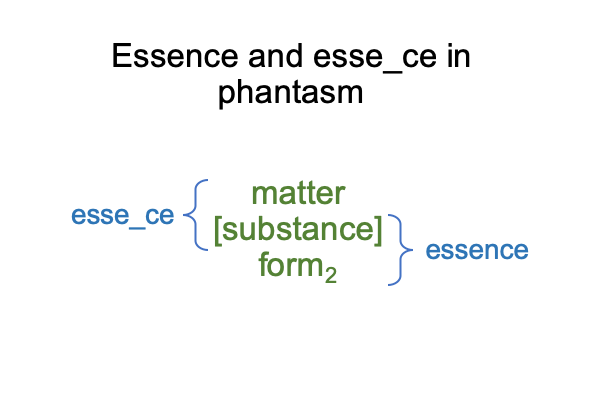
0052 What does an independent corroboration of the stories of Adam and Eve accomplish?
It changes what is happening3a by revealing an esse_ce that lends the story2a a realness that we cannot ignore1a.
To the modern, the stories of Adam and Eve are suppposed to be fairy tales. Adam and Eve are not supposed to serve as harbingers of civilization. They are not supposed to be weirdly consistent with a scientific hypothesis on the potentiation of unconstrained social complexity, that is, the first singularity. They are not supposed to be witnesses.
In light of the first singularity, the Genesis myth becomes counterintuitive to the modern imagination. It becomes monstrous. Essence without esse_ce can be ignored. Essence with esse_ce cannot.
0053 Strangely, this may be one of Lonenecker’s subtle contentions. As soon as one adds esse_ce to essence, a fantasy becomes more real than previously imagined. Myths may become monsters.
The same surprise works for the phantasm generated by the myth. The monstrosity of a monster comes from an unanticipated balance between esse_ce and essence.
0054 Premodern monsters have this character.
For example, the minotaur is a monster dwelling within the labyrinth of King Midas. The minotaur is half-bull and half-human. Its esse_ce is human. Its essence is a bull.
What a monster!
But, there is something natural to this monster, because it informs us of a familiar actuality, the matter of a human [substantiating] the essence of a bull. Here is a monster worth pondering. Where does the word, “bully”, come from?
Premodern monsters have an imbalance between esse_ce and essence.
0055 Moderns take this imbalance to the limit, making two radical discoveries. Both discoveries are built on one insight. We can lose touch with the contiguity between matter and form. We have discovered (indeed, even actualized) worlds without substance.
I label these two discoveries, the zeroth order of existence and form. I label then existence0 and form0.
This is how they work.
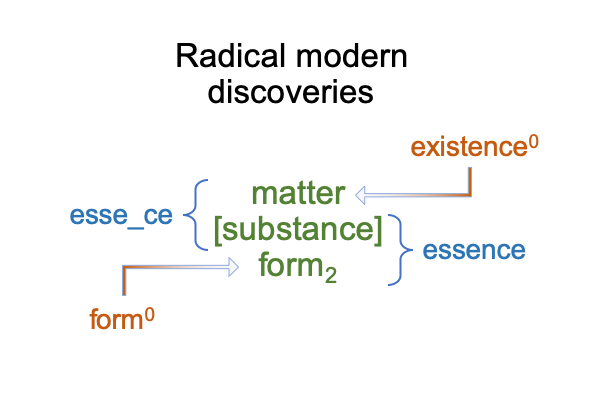
0056 Existence0 is esse_ce without substance.
Form0 is essence without substance.
Work serves as an example.
Humans are designed to work. Work gives people purpose and honor. Work goes with the essence of a civilized human.
So, what is work without humans?
What is pure work without substance?
May I mention the industrial revolution?
How modern can I get?
The modern era is full of monsters.
0057 Machines do work. Then, humans work machines. Sometimes, this takes great skill.
Now, with robots, humans get in the way. The robot is awarded the status of purpose and honor. Today, postmodern economists call the robots, “the fourth industrial revolution”. Make room for the pure existence0 of robots and the pure form0 of robotic work. Robots are not aware of what they are making. Robots do not know why they are working.
0058 Here is a picture.
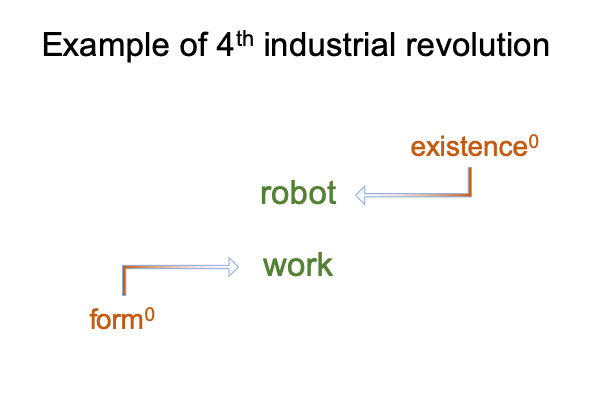
0059 How does this play out in our phantasms?
Humans become less than human.
Consumers are a type of monster. We choose among flavors of peanut butter without knowing what a peanut is.
One may reply, “Robots manufacture things that consumers buy. So this is an essence.”
Here is an essence that denies humans the dignity of work, turning humans into things (that is, consumers).
Savor the word, “consumer”.
0060 A consumer dies, leaving an estate filled with manufactured momentos, icons of life as a consumer. This monstrosity must be dealt with. Maybe a robot can be designed to do the job. The sheer bulk of the consumer’s life weighs down the world. Imagine the cynicism required to build a robot that performs this work.
0061 The sequence of movies, titled “The Matrix” (1999), portrays a cyncial resolution to these two great philosophical discoveries. The human becomes (1) a battery that powers a machine world and (2) the one who accepts the illusionary works of the machine world. The matrix is the deception that allows humans to be used as batteries.
0062 Both the machine world and the matrix are monsters.
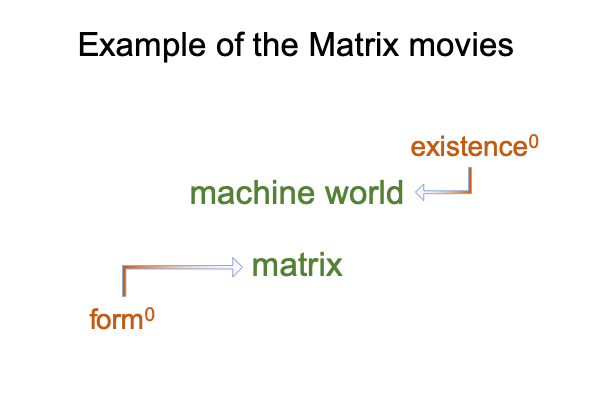
0063 In these movies, the hero’s journey gives substance to these twin monsters through a sacrifice. This is not any sacrifice. This is a human sacrifice. In doing so, the hero humanizes the two monsters. He provides substance, allowing the monsters to continue for another iteration.
If Rene Girard is correct, this plotline is as ancient as the most ancient civilizations. This plotline begins with the first singularity.
0064 Modern monsters are exemplars of things without substance.
Where does substance come from?All substance flows from God. God’s grace pours into the interstices between matter and form, body and soul, and a real event and its myth. Substance is the contiguity between being and form. God is foundation of substance.

